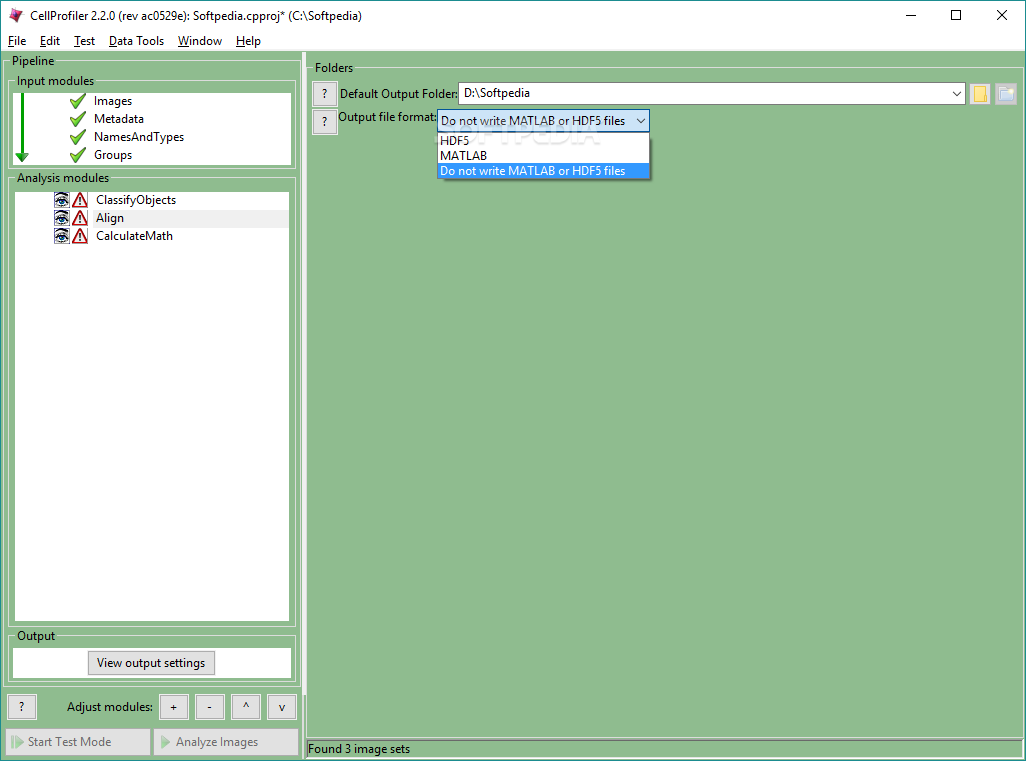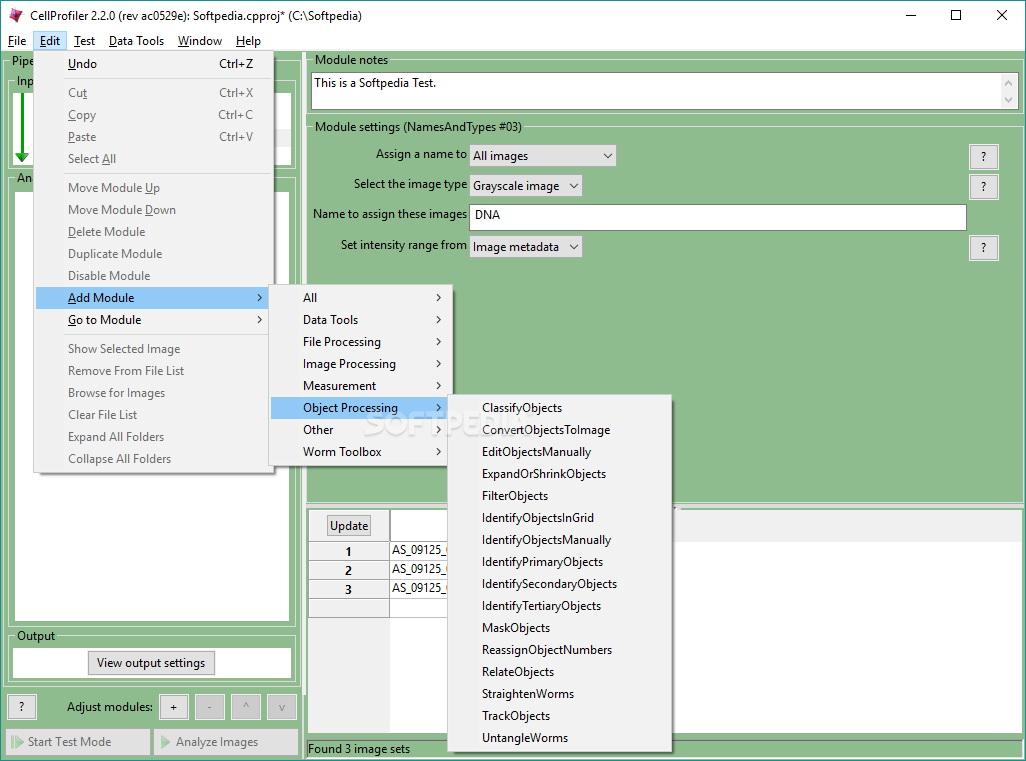

Fiji: An open-source platform for biological-image analysis.
CELLPROFILER SOFTWARE
CellProfiler: image analysis software for identifying and quantifying cell phenotypes. CellProfiler 3.0: Next-generation image processing for biology. Visualizing cellular imaging data using PhenoPlot. Image-based multivariate profiling of drug responses from single cells. High-throughput imaging for the discovery of cellular mechanisms of disease. Biophysical and biomolecular determination of cellular age in humans. Systematic analysis of breast cancer morphology uncovers stromal features associated with survival. A robust nonlinear tissue-component discrimination method for computational pathology. Computational pathology: challenges and promises for tissue analysis. Informatics for practicing anatomical pathologists: Marking a new era in pathology practice. Ten quick tips for machine learning in computational biology.

U-Net: deep learning for cell counting, detection, and morphometry. Advanced cell classifier: user-friendly machine-learning-based software for discovering phenotypes in high-content imaging data. Evaluation of methods for generative modeling of cell and nuclear shape. Imagining the future of bioimage analysis. Localization-based super-resolution imaging meets high-content screening. Cell Painting, a high-content image-based assay for morphological profiling using multiplexed fluorescent dyes. Toward performance-diverse small-molecule libraries for cell-based phenotypic screening using multiplexed high-dimensional profiling. A dataset of images and morphological profiles of 30 000 small-molecule treatments using the Cell Painting assay.

Repurposing high-throughput image assays enables biological activity prediction for drug discovery. Cell shape and the microenvironment regulate nuclear translocation of NF-κB in breast epithelial and tumor cells. Modulation of keratocyte phenotype by collagen fibril nanoarchitecture in membranes for corneal repair. Effects of substrate stiffness on cell morphology, cytoskeletal structure, and adhesion. Robust and automated detection of subcellular morphological motifs in 3D microscopy images. Single-cell morphology encodes metastatic potential. Systematic morphological profiling of human gene and allele function via cell painting. Quantitative morphological signatures define local signaling networks regulating cell morphology. Simultaneously defining cell phenotypes, cell cycle, and chromatin modifications at single-cell resolution. Functional interplay between the cell cycle and cell phenotypes. Evolution of cellular morpho-phenotypes in cancer metastasis. The complete analysis pipeline can be completed within 60 minutes for a dataset of ~20,000 cells/2,400 images. This protocol is highly automated and fast, with the ability to quantify the morphologies from 2D projections of cells seeded both on 2D substrates or embedded within 3D microenvironments, such as hydrogels and tissues. In addition, these shape mode distributions offer a direct and quantitative way to measure the extent of morphological heterogeneity within cell populations. Examining the distributions of cell morphologies across automatically identified shape modes provides an effective visualization scheme that relates cell shapes to cellular subtypes based on endogenous and exogenous cellular conditions. This algorithm enables the profiling and classification of cells into shape modes based on equidistant points along cell and nuclear contours. Here we present a protocol and software for the analysis of cell and nuclear morphology from fluorescence or bright-field images using the VAMPIRE algorithm ( ). However, effectively defining morphological shapes and evaluating the extent of morphological heterogeneity within cell populations remain challenging. Quantification of cell morphology has seen tremendous advances in recent years.

It is commonly used by clinicians and researchers in the study, diagnosis, prognosis, and treatment of human diseases. Cell morphology encodes essential information on many underlying biological processes.


 0 kommentar(er)
0 kommentar(er)
